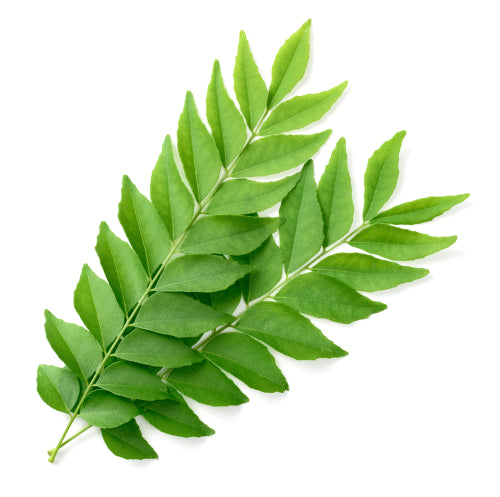Here is a simple Curry Leaf Tree Growing Guide to get you started in growing your own curry leaves. Curry Leaf plants are rewarding and easy to grow in the right climate. They are not related to the citrus tree, but they thrive in a very similar conditions and have similar needs to citrus trees. Here is a Curry Leaf Tree growing guide to help you grow and care for your plant successfully.
Light: Curry leaf trees thrive in full sunlight, so place your plant in a location that receives at least 6-8 hours of direct sunlight per day. If you're growing it indoors, place it near a south-facing window to ensure it receives adequate light.
Watering: Water the plant moderately, allowing the top inch or two of the soil to dry out between waterings. Overwatering can lead to root rot, so it's important to ensure proper drainage in the pot. During hot and dry weather, you might need to water more frequently.
Soil: Use well-draining soil, such as our Primo Potting Mix or a mix of potting soil, small bark, and perlite works well. Make sure the pot has drainage holes to prevent water-logging.
Temperature and Humidity: Curry leaf trees prefer warm temperatures between 65°F to 90°F. They can tolerate slightly cooler temperatures, but should be protected from frost. These plants also appreciate some humidity, so misting the leaves occasionally can be beneficial, especially in dry indoor environments.
Fertilization: Feed your curry leaf plant with a balanced, water-soluble fertilizer every 4-6 weeks during the growing season- spring and summer. Do not fertilize during the dormant period in fall and winter. We recommend Romeo fertilizer and G&B Organic Citrus and Fruit Tree Fertilizer, both available on our website.
Pruning: Regular pruning helps to promote bushier growth and prevents the plant from becoming leggy. You can start pruning once the plant reaches around 1-2 feet in height. Prune the tips of the branches to encourage branching. You can also remove any yellowing or damaged leaves.
Pest and Disease Control: Keep an eye out for common pests like aphids, whiteflies, and mealybugs. If you notice any infestations, treat them promptly with insecticidal soap or neem oil. Proper spacing between plants and good airflow can help prevent pest and disease issues.
Repotting: As the plant grows, you may need to repot it into a slightly larger container every couple of years. Repot in the spring when the plant is actively growing.
Harvesting: You can start harvesting curry leaves once the plant is established and has several branches. Pick the leaves as needed, but avoid harvesting more than one-third of the plant at a time. Fresh curry leaves can be used in cooking, and you can also dry them for later use.
Remember that growing plants can be a learning experience, and it might take some time to adjust to the specific needs of your curry leaf plant. With proper care, your plant should thrive and provide you with aromatic curry leaves for your culinary endeavors.
$60.00
--OVERVIEW-- SAVE ON SHIPPING: We can now ship potted fruit trees in MULTIPACK BOXES. Order as a 3-pack or 6-pack to save on the cost of shipping! This includes ALL PRIMO and ENTRY sized citrus, olive, fig and avocado trees as well as… read moreCurry Leaf Tree (Murraya koenigii)

Read About Deep Watering vs. Overwatering: What is the Difference?




